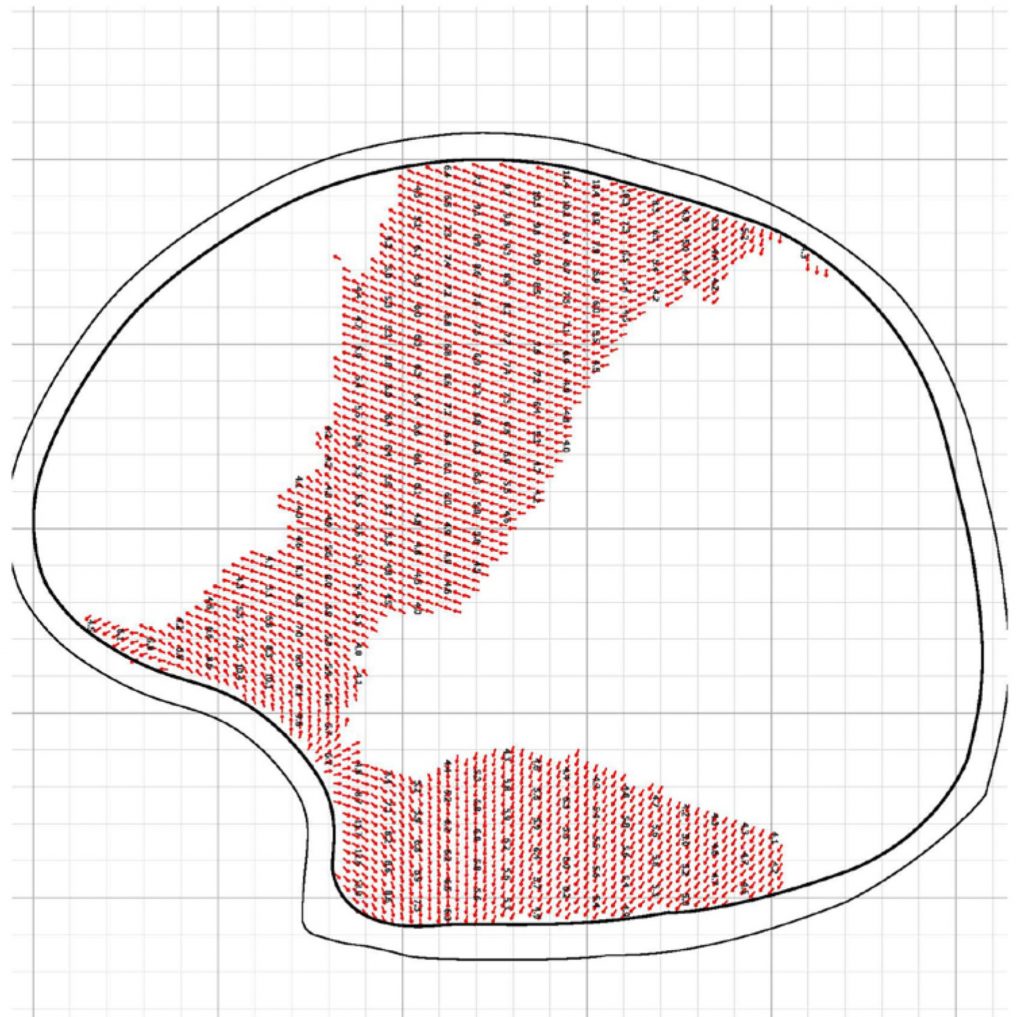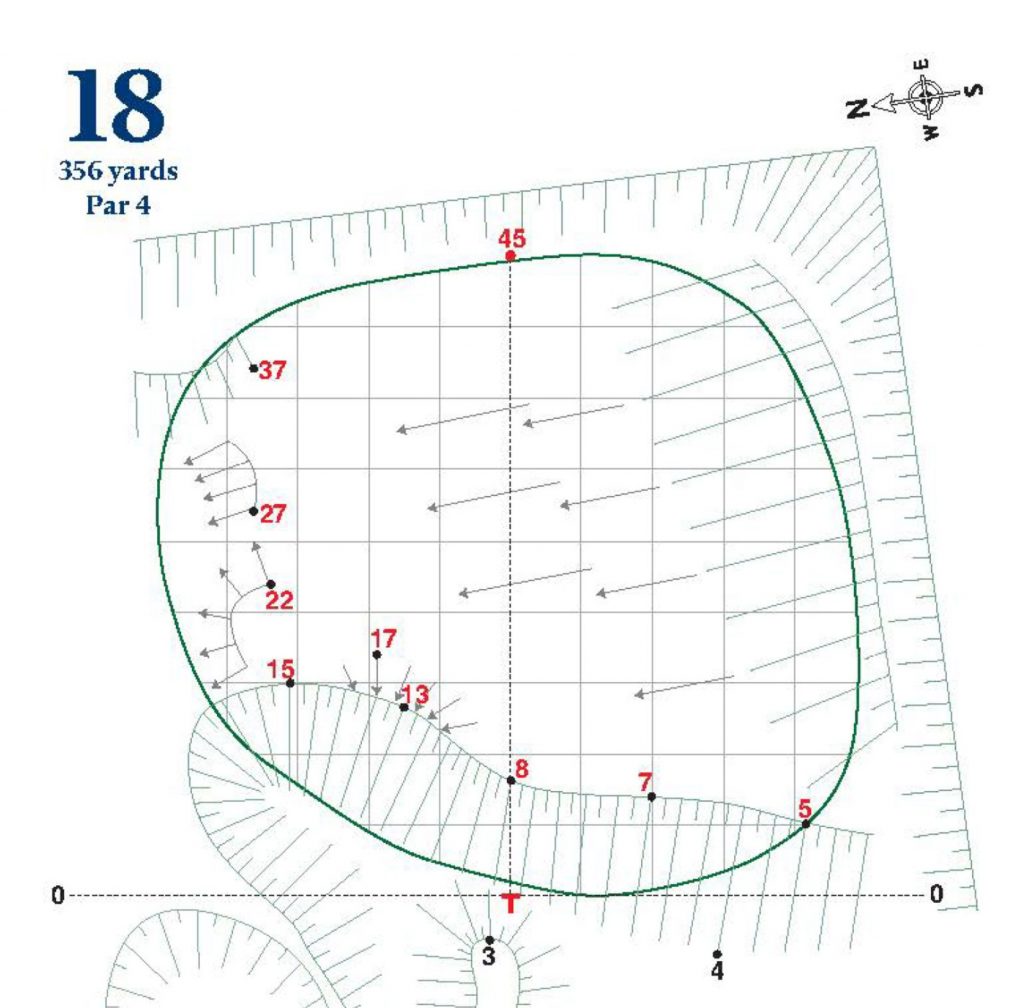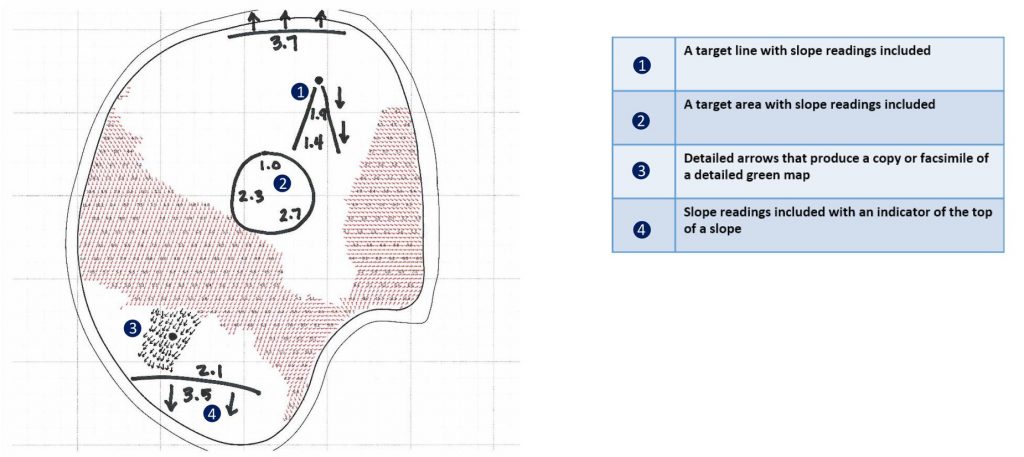In May 2017, USGA and R&A officials made it known they had potential concerns with the use of green-reading materials that had become an increasingly popular tool for professional and elite-amateur golfers. More than 14 months later, the governing bodies have formally shared their misgivings, jointly announcing plans that would limit the scope of such materials beginning in 2019 in an attempt to “reaffirm” an emphasis on player skill.
Under a proposal unveiled on Wednesday, an interpretation of Rule 4.3 (use of equipment) would allow players to still use the materials but would restrict some of the data the materials can provide as well as the materials size.
Specifically, the proposal calls for a “minimum slope indication limit” that would allow green-reading books to continue to use numbers, lines, arrows or other indications to identify slopes on greens, but only in areas of 4 percent slope (2.29 degrees) or greater. Areas where there is less slope on the green than the minimum would remain blank.

The proposal also includes a “maximum scale limit” of 3/8 inch to 5 yards (1:480) to keep the printed material to a pocket-sized publication.
RELATED: How green-reading maps are changing the way people putt
The decision to act, according to Thomas Pagel, USGA Senior Director, Rules of Golf and Amateur Status, stemmed from the governing bodies’ belief that the increasingly granular details found in the more commonly used green-reading books – many of which include dozens of slope indicators for every five yards of green – was compromising the need for players to rely on their own judgement, skill and ability.
“Reading a putting green is a skill that should be part of the game, it’s traditionally been a skill that’s part of the game,” Pagel said. “You think about architects and the subtleties that they sometimes put into greens, it’s part of the challenge of the game. And these materials were just eliminating that challenge and eliminating the need for skill of a player.”
Traditional yardage books that include basic illustrations showing the outline of greens and include information indicating ridges and general slopes will continue to conform to the Rules of Golf. Players and caddies also can still amend any green-reading materials with certain handwritten notes. These notes, however, cannot be a direct copy or replica of the more-detailed green maps currently in use.

In doing their due diligence, Pagel said that USGA and R&A officials spoke with numerous players on the US PGA, LPGA and European tours about the matter, along with officials at each of the various international tours. From this input, the governing bodies explored a handful of options before arriving at the current proposal.
Among the alternates discussed was preventing players from using any materials once their ball was on the green. Pagel described this as arguably the easiest solution to administer, but said that it would be taking the game too far back in history. “Players have referenced their hand-written notes in hole-location sheets and yardage books for years, and we’ve never been bothered by that,” Pagel said. “We were really committed to saying, ‘OK, what is the objective here?’ ”
Ultimately, officials gravitated towards the idea of the minimum slope indication limit to address their most specific concerns. The premise behind the minimum, Pagel said, is that holes on greens are generally cut on flatter sections of the putting surfaces where the slope is less than 3.5 percent, or 2 degrees. If the green-reading materials could not show the breaks in these spots as they had been doing, players would have to rely on their own judgement.
“Basically, the books are giving them a recommended line, and that goes too far. It’s removing that skill,” Pagel said. “So that was really the tipping point, where you started to see a reliance of players, especially on short putts [on using the books]. The skill of reading a green was diminishing, quickly going away. And we wanted to make sure it was retained.”

The 4 percent limit equated to roughly the amount of slope that’s readily visible to the naked eye, according to Pagel, allowing players to use the materials to help them strategise how to play their approach shots into greens.
In conjunction with the proposal, the USGA and R&A will begin a six-week feedback period where interested parties can offer suggestions before a final version of the interpretation goes into effect on January 1, 2019, along with the new Rules of Golf.
Players and caddies can continue to use the more detailed versions of the green-reading materials during practice rounds of tournaments, just as they are allowed to use distance-measuring devices ahead of playing in events on the various tours, in order to “do their homework” for a tournament.

While the majority of golfers using the green-reading material are professionals competing on tour, some courses have gone ahead and had their greens surveyed by the handful of companies that have surfaced to offers such services. However, the interpretation would prohibit the use of restricted green-reading materials by amateurs playing rounds they intend to post for handicap purposes.
Pagel said that the USGA and R&A intends to work with the makers of the green-reading materials and encourage them to submit materials to confirm they are conforming to the new interpretation. Such books could potentially receive some type of imprint so that tournament officials would know from a distance that they are conforming.
Pagel felt comfortable that the line being drawn on the matter was an appropriate one.
“What we’re saying here is for the best interest in the game moving forward, the skill of reading a putting green should be retained,” Pagel said. “And to have materials that do that for you is just a step too far. This rule is about keeping the game challenging. The challenge of the game is what we as golfers all enjoy. And pretty soon the game can get robotic if we start to eliminate the need for some of the skill and judgement. Frankly that takes away from the overall challenge and the overall enjoyment.”

